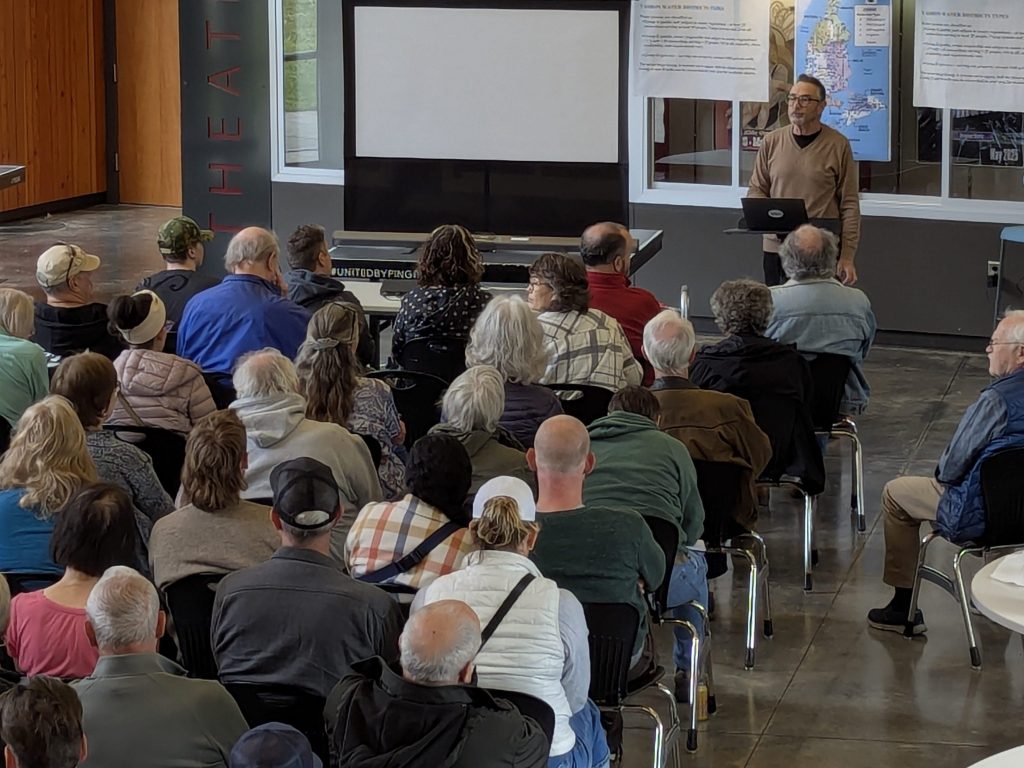What residents should know about building an ADU on Vashon, and why I am planning to build one myself.
On Vashon, we all know the value of maintaining the island’s character while recognizing the pressing need for more housing opportunities. At a recent meeting hosted by King County planners, residents came together to explore one of the most promising options for addressing that challenge: Accessory Dwelling Units, or ADUs.
If you missed the session, don’t worry because I’ve got you covered. I’m thinking about building one, maybe even a few, ADUs at Big Rock Ranch myself, and I found the information not just helpful but genuinely motivating.
Why Build an ADU on Vashon?
For me, the draw of an ADU is about more than just creating rental income or expanding living space. It is about being part of a forward-thinking solution for Vashon. ADUs allow property owners to offer affordable housing for essential workers like local teachers, caregivers, medical and veterinary personnel, or even artists, retail and food service workers, and family members; those who make this island what it is but increasingly struggle to find a place here.
The King County team emphasized that ADUs serve many purposes: in addition to providing affordable housing, they can support multi-generational living, reducing the environmental footprint of development, and offsetting property taxes, a factor especially relevant to anyone with larger parcels like mine.
At Big Rock Ranch, I imagine using an ADU for my family, and to possibly house farm help, or to provide a longer-term home for someone contributing to the island community.I see it as more than just construction; it is a way of stewarding the land and investing in the future of our community.
Getting Started: Research, Planning, and Resources
The meeting’s first and most important takeaway was clear: do not rush into building. Successful projects start with thorough preparation.
Several resources were mentioned to help:
- King County iMap Tool: iMap
Use this to identify any wetlands, slopes, or shorelines on or near your property. It provides an initial view, though further verification is essential. - Critical Area Designation: CAD
If iMap suggests any environmental constraints, you will need an official CAD. Starting this early can prevent massive headaches later. - ADU Eligibility Guide: Guide
King County’s ADU Requirements Overview is a helpful guide that outlines the basic rules, property requirements, and early steps residents should understand before starting the permit process for building an accessory dwelling unit. - Utility Coordination:
Early contact with Puget Sound Energy (PSE) and your local water and/or sewer providers is vital. PSE backlogs can cause multi-month delays for new electrical hookups. For anyone juggling rural infrastructure, like I am at Big Rock Ranch, keeping a close eye on these timelines is essential. - King County Permitting Division Contacts:
Residents were encouraged to reach out directly to planners for questions about sewer availability, water access, and stormwater requirements.
These steps are not just bureaucratic hurdles but essential foundations for moving your project forward smoothly. The speakers at the meeting emphasized that the more prepared you are before submitting your permit application, with complete documents, site plans, and utility confirmations, the faster and more efficient your review process will be. Starting strong helps avoid unnecessary delays and creates a clearer path to approval.
Attached vs. Detached: Costs, Benefits, and Complexity
One of the biggest decisions is whether to build an attached ADU, which is attached to your current home or connected by a breezeway, or a detached ADU, which is a stand-alone structure.
Attached units are cheaper, faster, and simpler to permit. Detached units offer more flexibility and privacy and often trigger additional permitting requirements such as stormwater management plans, land disturbance reviews, and civil engineering needs.
I am leaning toward building detached ADUs since they offer much more flexibility in how the land can be used over time. With access from a public road at the front and a private access road along the back, I have some options for where these units could go. That said, I am carefully weighing the added complexity. Detached units come with extra challenges, like needing complete stormwater plans, possible critical area reviews, and ensuring utility hookups are feasible without tearing up half the property. I am thinking carefully about how to place them where they are easy to reach, offer plenty of privacy, and avoid triggering expensive land development requirements I could otherwise sidestep with smart planning.
The county stressed that even a small move outside the existing building envelope can trigger new regulatory requirements. If your project is detached and not carefully placed, stormwater control plans, wetland considerations, and site grading plans could all become part of the process.
What the Permit Process Looks Like
Once you have completed your research and gathered your materials, the King County permit process moves through several critical stages, as explained by the county officials at the meeting. They emphasized that careful preparation on the front end, such as gathering site plans, utility confirmations, critical area reports, and fully completed application forms, is what sets successful projects apart.
New laws will tighten review timelines for many permits to 65 days starting in 2025; however, the clock stops whenever new information is needed, making prompt and thorough responses vital.

Insights from the Ground Up
The message throughout the meeting was clear and encouraging: building an ADU is absolutely within reach, but success depends heavily on being prepared, organized, and willing to persist throughout the process.
I am already imagining where an ADU could fit naturally into the landscape of my property, how it could support the farm, and how it might offer something meaningful back to the broader Vashon community. Some of the most practical advice I took from the meeting included starting with a simple site sketch, reaching out to utilities early, verifying septic capacity well ahead of time, and using the permit checklist carefully to avoid unnecessary delays.
Whether working with a few acres or a smaller in-town lot, building an ADU is not just about adding another building; it is about creating space for connection, supporting the island’s future, and honoring the land we live on. If you are also considering building one, you are in good company. I will post updates here as I move through the process, and I will also share a copy of the PowerPoint from the meeting along with any additional resources I gather. If you are working on a project or thinking about it, I would love to hear what you are learning as well so please share what you know, or ask any questions you might have in the comments.
For official resources, planning tools, and King County permitting contacts, visit King County Department of Local Services – Permits.






